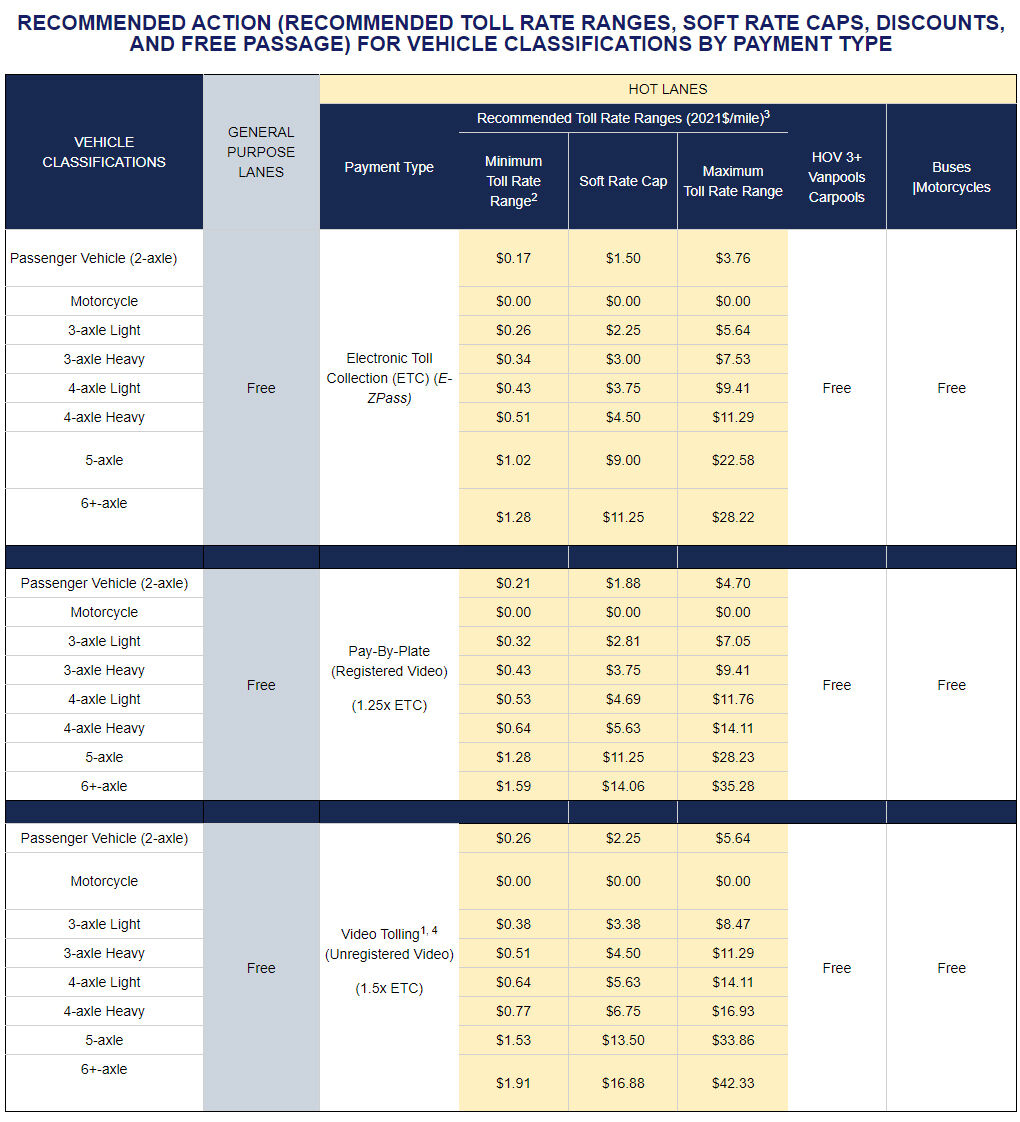Drivers who use toll lanes on portions of the Beltway and Interstate 270 in Maryland would pay a minimum of 17 cents per mile under a new proposal by the state’s tolling authority.
With express lanes still in the early planning stages, the Maryland Transportation Authority’s suggestion is 3 cents per mile less than in its initial 20-cent proposal, and identical to the per-mile rate on the nearby Intercounty Connector, or ICC.
In a news release, the MDTA said the lowered prices were a result of comments received during the first public comment period, which included in-person and online hearings.
- More Maryland News
- More Local News
- Transportation News
The new minimum rates would also be lower for trucks, ranging from 26 cents for smaller commercial vehicles to $1.02 for tractor-trailers.
If built, two toll lanes in each direction would run from on the Beltway in Maryland from the American Legion Bridge to Old Georgetown Road, and on I-270 up to I-370.
The toll lanes would be Maryland’s first to use “dynamic pricing,” with rates changing based upon real-time traffic, with the goal of maintaining speeds of at least 45 miles-per-hour.
In the new proposal, the maximum per mile rate for passenger vehicles would be $3.76 per mile, and $22.58 for tractor trailers. The maximum rates are consistent with the original proposal.

The toll lanes would be designed by Australian toll road operator Transurban, which operates toll lanes in Northern Virginia. A public-private consortium would build and finance the lanes, and get most of the revenue.
Some vehicles would be able to drive in the toll lanes for free: Vehicles carrying three or more people, buses, and motorcycles.
Regular lanes on the Beltway and I-270 would remain free. Critics say the toll lanes are unfair for low-income drivers, and argue space used for toll lanes could be used for more free lanes.
The transportation authority’s board is scheduled to vote on the proposal on Nov. 18. If construction is ultimately approved, the lanes would likely open five years later.
Source

